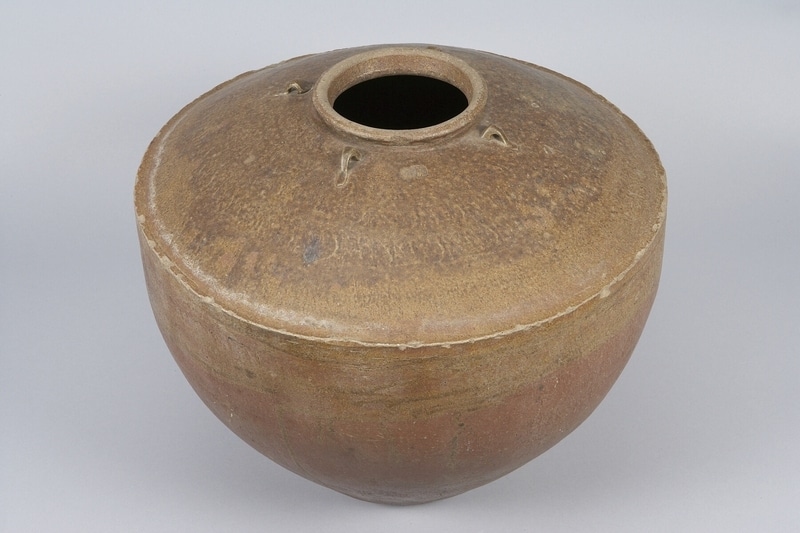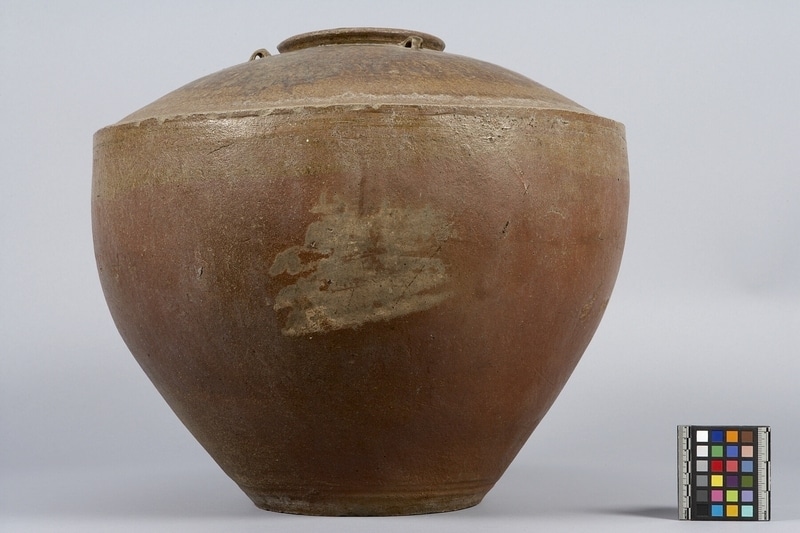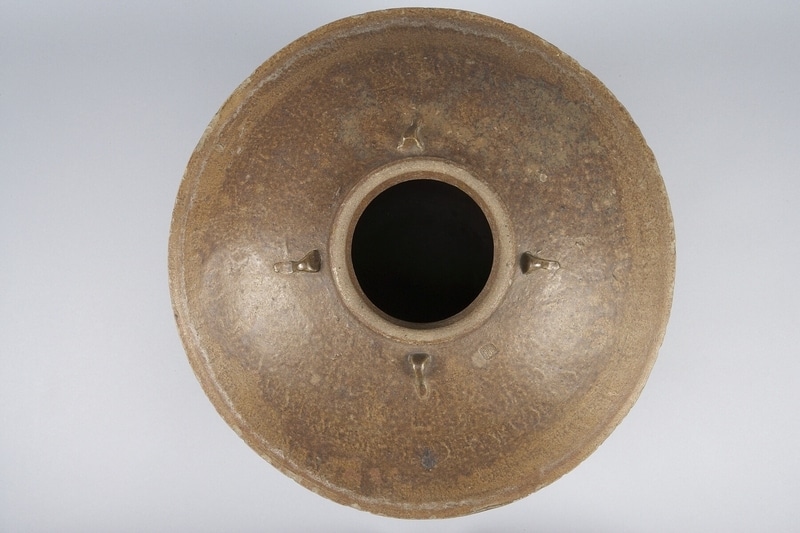Jar Item Number: Ia267 from the MOA: University of British Columbia



Description
A globular jar with a prominent ridge about a third of the way down from the mouth. The upper third of the body is in the shape of a turned-over dish. The mouth is relatively narrow with four small plain vertical lugs around it. There is a stamp between two lugs.
History Of Use
This jar was probably exported from Thailand to the Philippines via the Burmese port of Martaban from which the generic name for large jars is derived. They are also referred to as dragon jars because they often, though not in this case, have a moulded dragon decoration on their sides. These pot-bellied jars were designed for long journeys at sea, with lugs big enough to pass a rope through and as containers for food, oil and water as well as for packing smaller porcelains. While dragon jars were mainly manufactured in the kilns of southern China as trade items during the song and Ming dynasties, they were also manufactured in other parts of Southeast Asia such as Burma, Cambodia, Thailand and Vietnam. Due to their physical characteristics - resonance, vitreosity and durability - Chinese ceramics became fully integrated with the ideology and ritual in Philippine societies and played an important role in all aspects of cultural life (Langrick, p.61). Their functions were varied and included utilitarian, ceremonial, religious roles, as heirlooms, in mortuary ceremonies as burial goods and as items of prestige. Treasured for their supernatural powers, large jars were considered to harbour spirits or household gods while some spoke prophesying events. As heirlooms, large jars together with stories of their origins and other tales associated with them, often mythical and wondrous, were handed down from one generation to another. With age, jars increased in value and one's wealth was largely reflected in the number of old jars possessed.
Narrative
An heirloom piece, defined by Dr. Tecson as one never in the ground, hence different from an excavated piece, and not necessarily from his family. This piece is from Zamboanga del Sur, Mindanao Island, Philippines.
Specific Techniques
Probably hand-built with clay rings of varying sizes. These were fused together by holding a mallet with a convex face against the inside surface of the jar and tapping gently with a concave mallet held against the outer surface.
Iconographic Meaning
In many indigenous groups of the Philippines, supernatural power was attributed to Chinese ceramics because of the ringing sound emitted when lightly tapped and their vitreous, shiny glazed surfaces which impart an impermeable quality. The ringing sound was seen as a magical voice able to attract the attention of powerful ancestor spirits. Their impermeable and seemingly imperishable surfaces were believed to have great protective power against all kinds of influences, from evil spirits to poisons (Langrick, p. 55-56). It is likely that Siamese ceramic wares were also associated with these qualities. According to Langrick, the country of origin of these wares were not important and distinctions were not made between Chinese, Sawankhalok (Thai), Annamese (Vietnamese), Cambodian or native pottery. Whatever distinctions were made concerned only their actual serviceability for the ritual being performed (p. 258).
Cultural Context
exchange; status; ceremonial; heirloom
Item History
- Made in Zamboanga Del Sur, Philippines between 1299 and 1500
- Owned by Julia Tecson and Miguel Tecson before November 16, 1987
- Received from Julia Tecson (Donor) and Miguel Tecson (Donor) on November 16, 1987
What
Who
- Culture
- Philippines
- Previous Owner
- Julia Tecson and Miguel Tecson
- Received from
- Julia Tecson (Donor) and Miguel Tecson (Donor)
Where
- Holding Institution
- MOA: University of British Columbia
- Made in
- Zamboanga Del Sur, Philippines
When
- Creation Date
- between 1299 and 1500
- Ownership Date
- before November 16, 1987
- Acquisition Date
- on November 16, 1987
Other
- Item Classes
- ceramics
- Condition
- good
- Accession Number
- 1262/0018